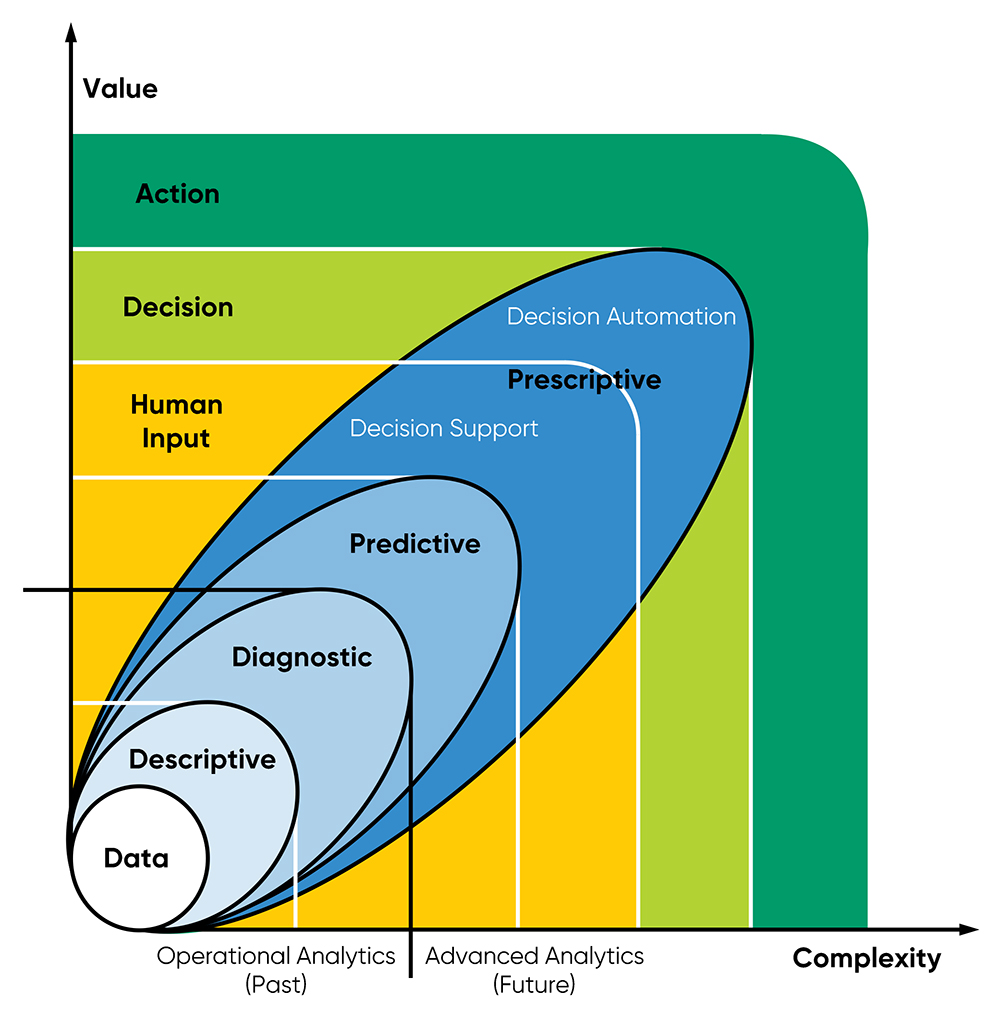Data analytics can be viewed as a continuum. Your business’s position on the continuum reflects the business’s level of data maturity. At one extreme there are those businesses that are entirely reactive. They can only sense challenges as they arise and therefore can only respond after the fact. At the other extreme there are those businesses that are proactive. They have evolved their analytics capabilities to the point that they can accurately predict upcoming challenges sufficiently ahead of time that they then have time to prepare an appropriate and timely response.
Developing your business’s data analytics capability is a journey, a journey that Advitech will take with you. A prerequisite to embarking on this journey is that your business has data. If your business doesn’t yet have sufficient data, then Advitech can help with that. We will work with you to identify what data are needed and recommend smart, practical, and affordable ways of obtaining that data.
Once your business has the necessary data, Advitech will help you transform your data’s potential into “data power”. After reaping any low hanging fruit, further value can be extracted either by analysing more complex data or by using more advanced analytical techniques. By increasing the degree of analytical capability or “data intelligence” in your business, you will increase the productivity, and thus the competitive advantage of your business.
There are broadly two stages to your business’s analytics journey, operational and advanced. Operational analytics, consisting of descriptive and diagnostic analytics, analyses the past. Advanced analytics, consisting of predictive and prescriptive analytics, analyses the future. These different stages are evidenced by the tools used (historical reporting, dashboards, alerts, and more advanced analytical tools) and the nature of the insight (blindsight*, hindsight, foresight, and oversight). The following diagram illustrates the stages of your business’s analytics journey.
* Blindsight is synonymous with “gut feeling”. It is the ability to respond to visual stimuli without conscious awareness.
An illustrative diagram showing the data analytics journey
Operational analytics
Descriptive analytics answers questions such as what happened? How many cases? How often? Where and when? However, descriptive analytics doesn’t necessarily tell you why. It provides a snapshot of the past but provides limited ability to guide future decisions. It is useful when your business wants to summarise historical data and uses techniques such as data aggregation, data mining, and statistical analysis. Acting on such information means your business is acting blind, relying on guesswork and intuition at best.
Diagnostic analytics answers questions such as where exactly is the problem? Why did it happen? What actions are needed? It provides insight into the past but still only limited ability to guide decisions going forward. It is useful when your business wants to understand patterns in historical data and again uses techniques such as data aggregation, data mining, and statistical analysis. Acting on such information means your business is acting with hindsight.
Advanced analytics
Predictive analytics answer questions such as what if these trends continue? What might happen next? What’s the best that can happen? It provides insight into the future, enables accurate forecasting, and informs low complexity decision making. It is useful when your business wants to make an educated guess at future data and uses techniques such as statistical analysis, machine learning, simulation, and sometimes mathematical optimisation. Acting on such information means your business is acting with foresight.
Prescriptive analytics answers questions such as what should we do? How can we make it happen? It provides recommended best actions or strategies, data-driven decision making, decision support, and decision automation. It is useful when your business has important, complex, or time-sensitive decisions to make and uses techniques such as rule-based systems, heuristics, and mathematical optimisation. It is most effective in circumstances where your business has control over what is being modelled. Acting on such information means your business is acting with oversight.
What comes next?
Beyond the analytical techniques discussed above is an emerging area often referred to as cognitive analytics that includes artificial intelligence and autonomous systems.

